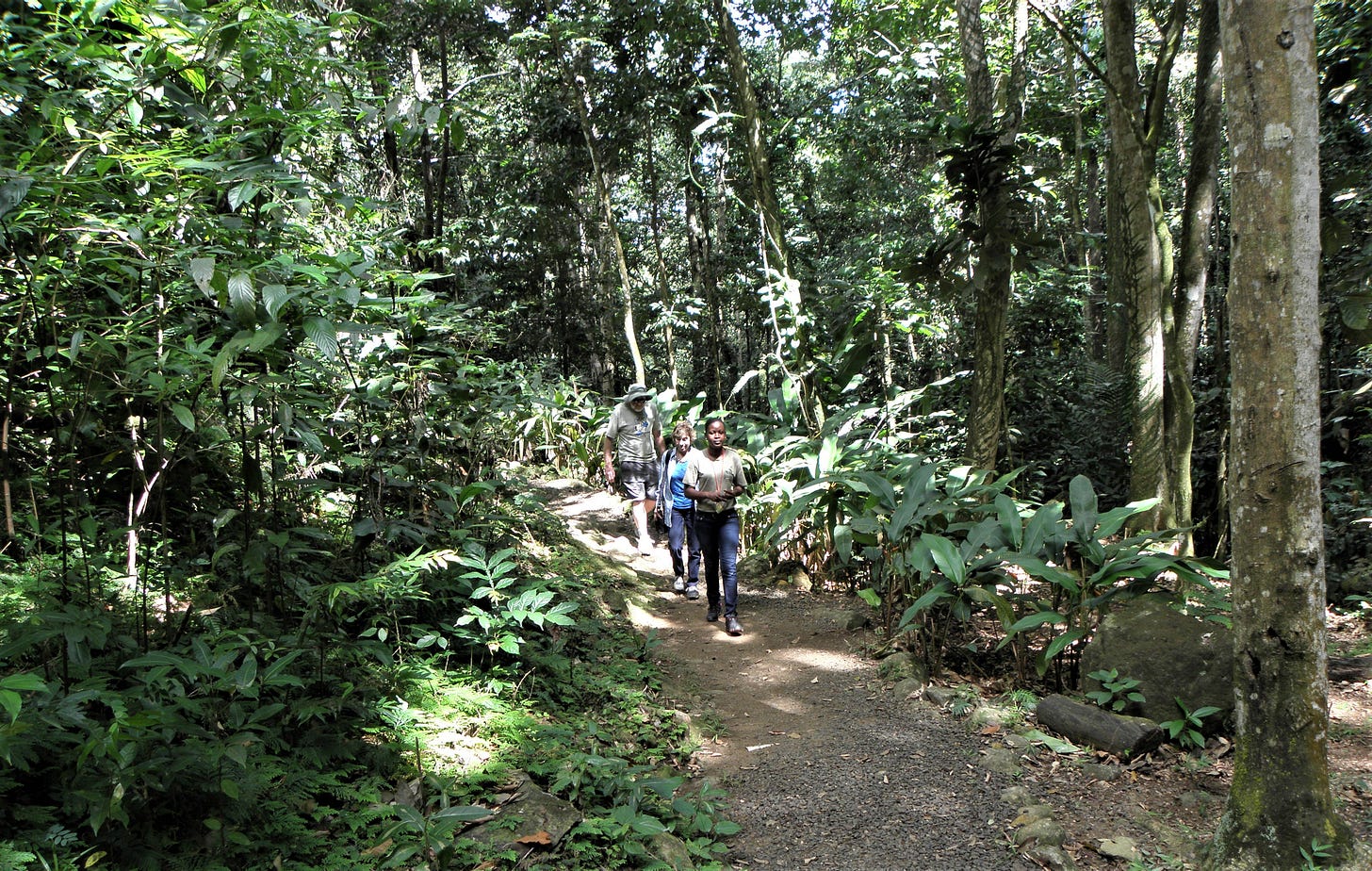St. Lucia, a Caribbean tropical paradise
From countless beaches to small villages this island offers a perfect place to regenerate and to relax.
Words printed on T-shirts worn by locals offered a welcoming note shortly after my wife Fyllis and I arrived on the Caribbean island of St. Lucia.
“Be happy.” “Forget your troubles.” “Don’t worry, just party.”
On the other hand, the sticker attached to the bumper of an automobile offered a warning about the challenge awaiting us when we drove our rented car. More about that later.
St. Lucia’s beaches offer something-for-everyone variety
Many people visit St. Lucia for its beaches, and they present something-for-everyone variety. Stretches of soft sand include gently curving seashores overlooking sweeping bays and tiny slivers favored by island residents. The sea ranges in color from light green to turquoise to deep blue.
Fyllis and I made Viggie Beach our go-to respite. It’s lined by palm and almond trees which provide welcome shade. Several modest snack bars offer food, beverages, and opportunities to meet and mingle with St. Lucians.
Our two-week stay provided time for Fyllis and me to come into contact with many more island residents, to delve into the “real” St. Lucia, and to discover why some 1.3 million people – about seven times as many as live there – visit each year.
For starters, beaches provide a backdrop for the lush landscape that blankets the island and contributes to making it a tropical paradise. Greenery lines roadsides and covers ridges which rise into sheer cliffs and mountains that fill the interior. A profusion of flowers transforms the setting into a natural botanical garden, and photogenic waterfalls add to the picture-perfect scene.
Towering over it all are the twin Gros and Petit Pitons, pointed volcanic spires that overlook the rugged terrain. While it’s possible to climb to the peak of the Pitons, an experience we quickly agreed to skip, we discovered that driving on what passes for roads in St. Lucia presents other challenges.
Driving in St. Lucia is a daredevil experience
Because Great Britain has held sway over St. Lucia since 1814, after control switched between England and France 14 times, the steering wheel of automobiles is on the right side and cars drive in the narrow left lanes of roads. Picture yourself navigating a vehicle along a roller coaster track, multiply the number of twists and turns by three, add potholes large enough to swallow an Army tank and you have an idea of what it’s like to maneuver through island traffic.
Frequent “Hairpin Turn” signs are an understatement. Adding to the test is the occasional tailgater who speeds by as if he were racing at Le Mans. As one hot rodder zipped past our car, I could make out the intimidating message on his bumper sticker before he sped around the next curve: “No gears, no fears.”
Tiny towns with big appeal in St. Lucia
When Fyllis and I could catch our breath, we enjoyed driving to various destinations around the island. First on our agenda were the tiny towns, consisting of colorfully painted houses fronting the sea, and each village with its attractions and personality.
Castries [Cas-trees], the capital, is the hub of economic activity. Its port berths both massive passenger cruise liners and hulking cargo ships. The weekly market is a popular destination event, a lively bazaar where vendors sell everything from spices, soaps, and souvenirs to homegrown produce and home-spun clothing.
Soufriere [Soo-free-air] is home to Sulphur Springs, a collapsed volcanic crater where people willing to put up with the pungent scent may take soothing mineral-rich mud baths touted as beneficial for the skin. The town also is blessed with stunning beaches and plummeting waterfalls.
Anse la Raye [Anz la Ray] is one of several small fishing villages of pastel-hued bungalows, brightly painted boats, and men cleaning their catch and mending nets.
Britain and France both saw St. Lucia as a prized possession
Other places relate serious chapters of St. Lucia’s history. The British built Fort Rodney in 1780 while vying with France to control the island. Barracks, bunkers, and the remains of the commander’s residence are among reminders of that time.
The French established a military presence on Morne Fortune [Morn Fortoon], an imposing mountain that looms over Castries. Later the British claimed the position and established fortifications, gun emplacements, and other military structures scattered about the area.
A personal favorite was Marigot Bay, a deep inlet surrounded on three sides by steep, forested hills. The novelist James Michener called it “The most beautiful bay in the Caribbean.”
The French and British battled for control of the bay. Today it serves as a docking place for boats ranging from small outboard motor craft to massive super-yachts.
A different kind of vessel provided transportation for a water-borne island tour that introduced Fyllis and me to a diverse sampling of places and pursuits. Given the name, it wasn’t surprising that a festive feel manifested itself shortly after our Spirit of Carnival Party Cruises catamaran left the dock. Passengers sipped and supped, danced to piped music, and admired and photographed the superb scenery the boat passed.
A visit to St. Lucia should include a water outing, along with experiencing its natural attributes, intriguing history, and other appeals. As one guidebook puts it, the island has been “blessed by nature,” and offers “geographic and cultural riches enough to embarrass far bigger nations.”
If you go: For more information about St. Lucia, log onto stlucia.org.
Victor Block
After gallivanting throughout the United States and to more than 75 other countries worldwide and writing about what he sees, does, and learns, Victor Block retains the travel bug. He believes that travel is the best possible education and claims he still has much to learn. He loves to explore new destinations and cultures, and his stories about them have won many writing awards.












